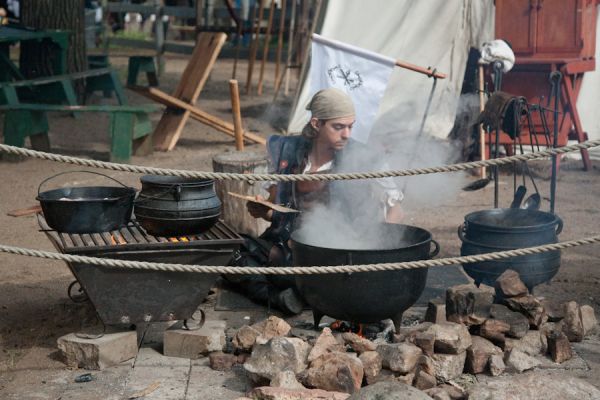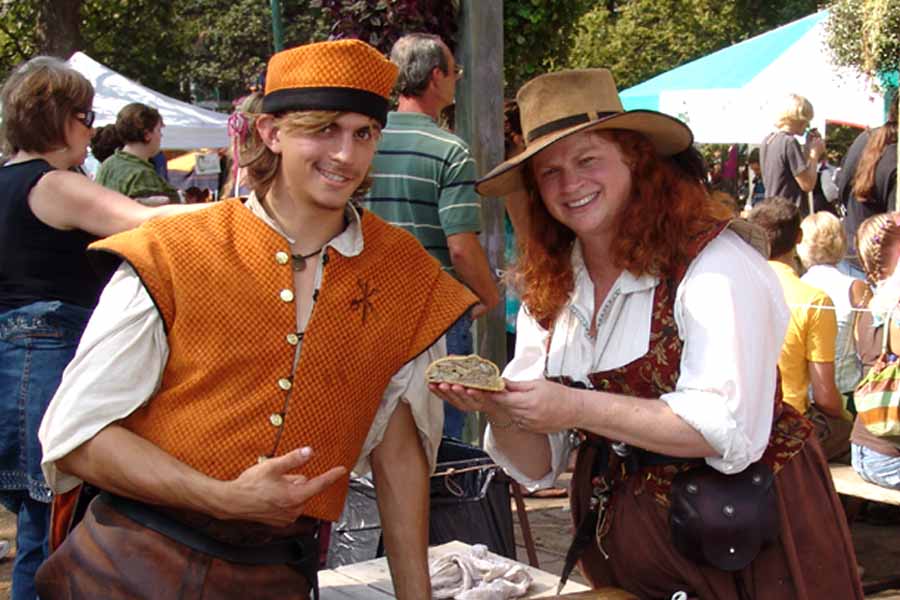My Narrative
Beer has been around humanity for centuries. Although made popular by the European cultures, recipes have been discovered in Middle Eastern, Asian, South American, and African cultures. I chose to focus on the early history of beer as it affect European cultures. I find it fascinating how much the history of beer was intertwined with various faiths. Recipes were often used as part of prayers, beer was sacrificed to the gods and left in the tombs of kings, and beer was produced often produced by monks in European and Asian countries. This article could go on much longer, looking at the different cultures, beer’s religious effects on religion, and its importance to local economies. I encourage you to research the history of beer from other cultures.
Passover Seder Traditions
Preparing the Seder meal requires several hours of work. I strongly recommend that the main cook gets other members of the house to help, so that the meal will be completed before the Seder would begin at sunset. It is best to prepare all the seder foods before the onset of the Holiday in order to avoid pre-meal chaos or halachic questions.
The Passover meal allow the family to think and reflect and has plenty of meaning and allusion. The Seder plate has six items on it, arranged in a special order. The plate is placed on top of the covering of the three matzo and is placed in front of the head of the household.
The foods of the Seder plate are listed below, with the reason each is included, the method of preparing it, and its role in the Seder meal.
Seasoning Your Cast Iron Cookware
Cast Iron has been used for several centuries in providing meals to others. Ideally, they were to be used and handed down to the offspring, who would hand it down to their offspring. If “hand me down” cast iron is not available, finding used well-seasoned cast iron at garage sales and/or estate sales are the best way to go. Cast Iron pots include fry pans, griddles, dutch ovens, cauldrons, sauce pots, and grills in all different sizes.
Cast iron cookware, in my humble opinion, is great. Once seasoned, cooks can use less oil and they are easy to clean and maintain. Sometimes, it is difficult to buy used cast iron and it becomes necessary to buy new (pre-seasoned) cookware. Pre-seasoned does not mean it is seasoned as it should be. Things will still stick to the “pre-seasoned” new cookware. Below are some steps I can offer on how to season your own cast iron cookware. Remember: Pot lids need to be seasoned as well.
1. If you have a fire pit or barbecue pit, that is ideal. The heat is intense, but it will get the job done efficiently without smoking up your house.
A. If you are a vegetarian or vegan, use olive oil. This will take longer (about 10 times) as the fats will take longer to caramelize.
B. If you eat meat, use lard. Three seasonings should do the trick.
2. Using the fire pit or barbecue, coat the interior and exterior of the pot with oil/lard and put onto the fire. The oils may catch fire and this is expected. After 10 minutes, turn the pot over so the inside may be done as well; after 10 minutes, pull off of the heat.
3. Coat again and repeat (3 times for lard or 10 times for olive oil)
4. Once cool after the final firing, wash with water and cloth only. Do not scrub your pot and do not use soap. After you use it for cooking, only light scrubbing with a cloth or natural fiber scrubber with water should be used. You don’t want to remove the carbons that have been used to season your pot.
 If you are one of the unfortunate people who do not have access to fire and can only use a stove, I will warn you that this can be a smelling and messy project.
If you are one of the unfortunate people who do not have access to fire and can only use a stove, I will warn you that this can be a smelling and messy project.
Preheat the oven for 450 degrees. Once hot, coat your pot in the oil of your choice (olive oil or lard). Keep in the oven for 45 minutes and pull out to re-coat the pot. Repeat for steps 3 and 4, skipping steps 1 and 2.
Gratitude
This past season and year have been amazing. First, I became the official food writer for “Renaissance Magazine.”
Second, despite the weather, the appearance at Siouxland was well w orth it between the demonstrations and cookbook sales. The cold and rainy weather did not diminish our spirits!
orth it between the demonstrations and cookbook sales. The cold and rainy weather did not diminish our spirits!
Third, we experienced some amazing weather at the Minnesota Renaissance Festival. There was no rain until final weekend. The demos went well, fed an average of 100 people each day, amd sold more cookbooks. Also, the community kitchen in which we help feed the cast members, were nominated and received the “Best Group Award” in 2009 at the Minnesota Renaissance Festival. We were touched by everyone’s generosity and kindness; we couldn’t have done it without your help.
I almost forgot to add that I also won a $100 gift certificate for my website as part of a Passion and Quality campaign.
We plan on returning in 2010. Thank you all.
Ship Provisions during the early 17th century
A friend/colleague forwarded me some information regarding the typical provisions on ships (particularly the Dutch East India Company) during the early 17th century. It was forwarded to me by MacGregor’s Historical Games.
Source: It is taken from the Halve Maen (Half Moon) interpretive manual found at http://www.hrmm.org/halfmoon/manual.htm
I thought fan of food and historical research may appreciate this list.
1. Meat (Beef)
2. Bacon (Pork)
3. Wine
4. Brandy
5. Oil
6. Klein beer (i.e. small beer)
7. “Good” beer
8. Spanish Wine
9. French Wine
10. Vinegar
11. Water
12. Ham (for officers)
13. Smoked Beef (for officers)
14. Smoked tongue (for officers)
15. Biscuit
16. Groats
17. White peas
18. Gray peas
19. Beans
20. Butter
21. Stock-fish (usually dried cod)
22. Cream Cheese
23. Hard Cheese
24. Salted Pork
25. Salted Beef
26. Pickled Herring
27. Whale Blubber
28. Brandy
29. Salt
30. Mustard Seed
I find it interesting that brandy is listed twice on the list.
